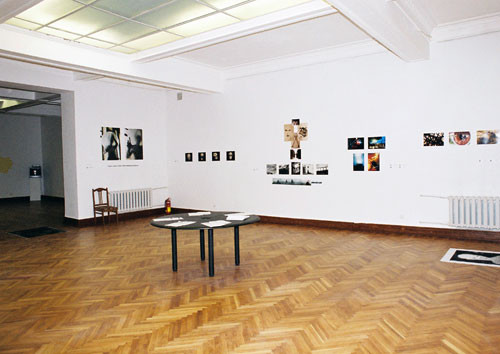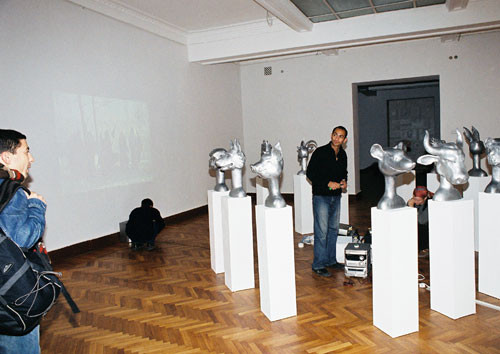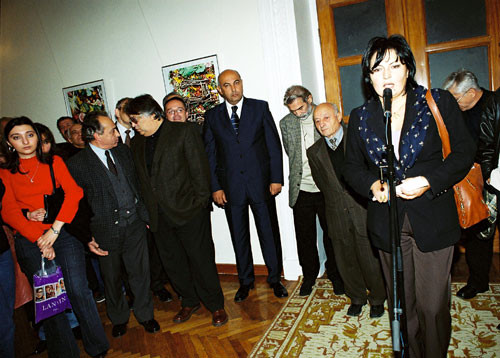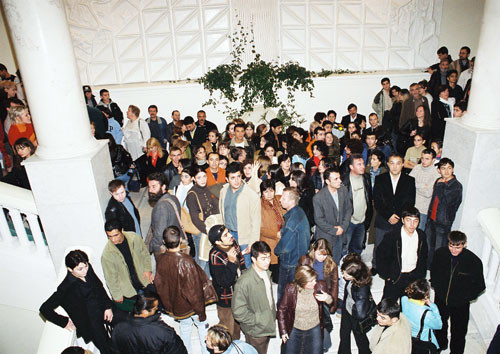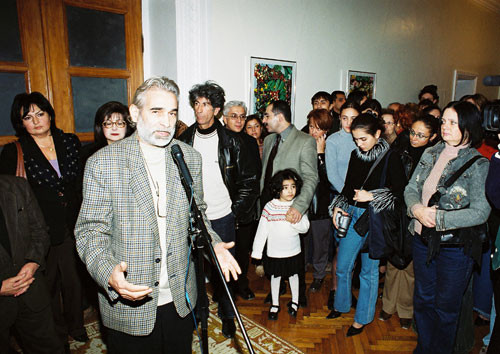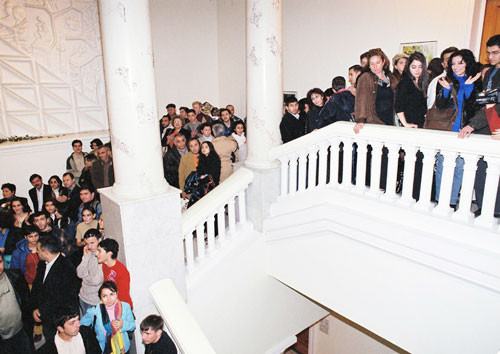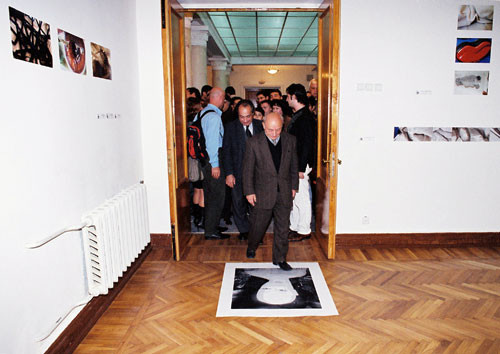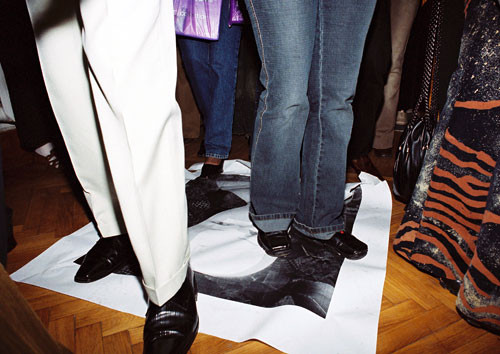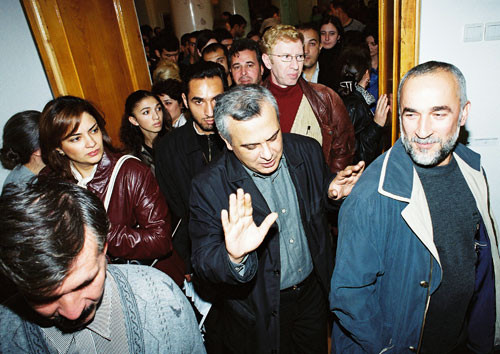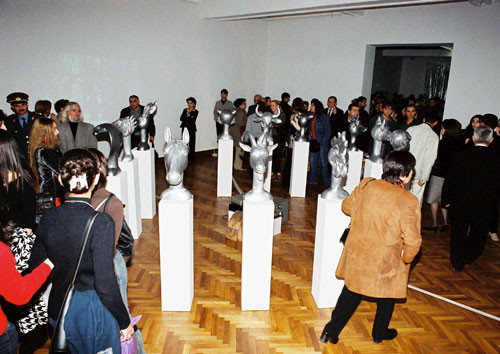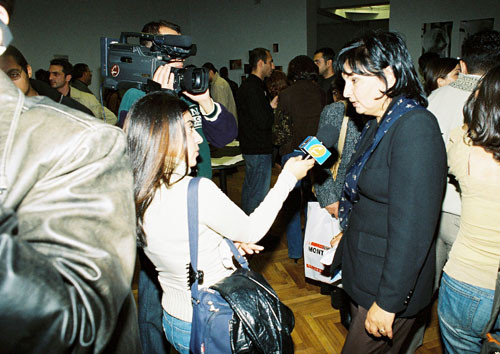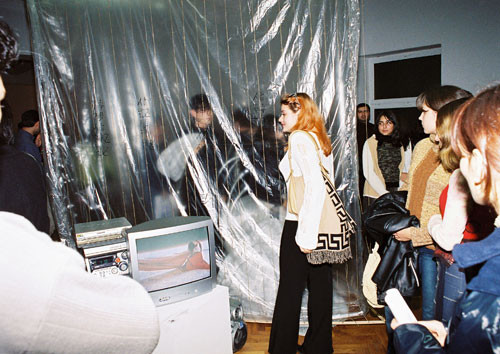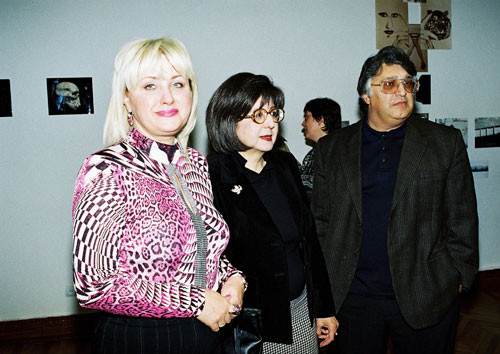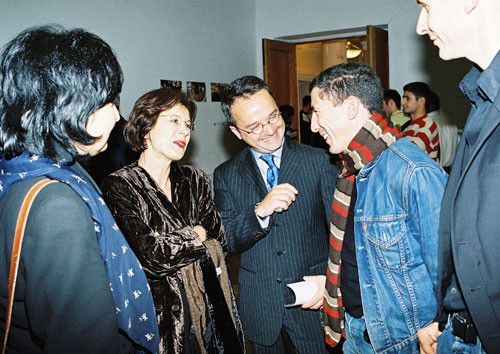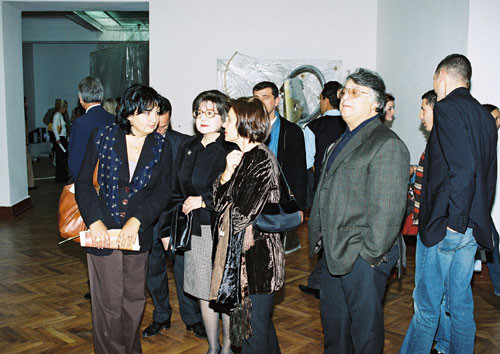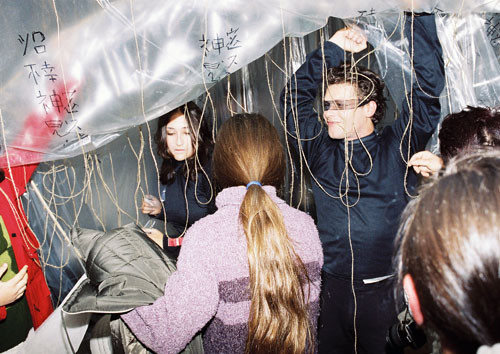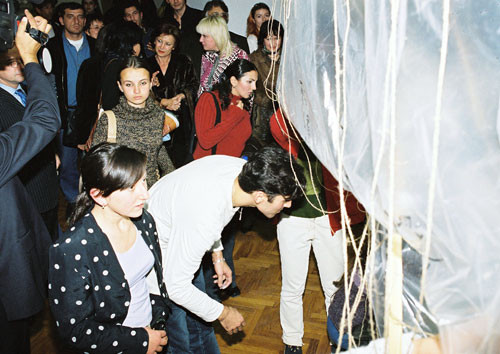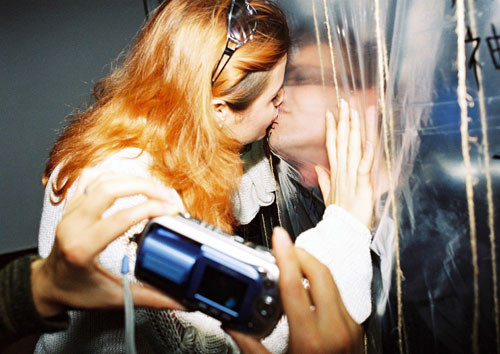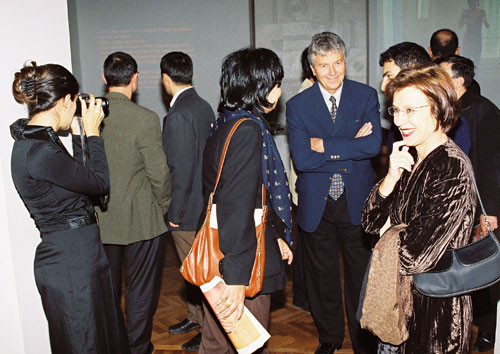“Aluminium. Art + New technology” - Festival
04.11.2003 - 07.11.2003“Contemporary Museum” Exhibition, Museum Centre (Installations, video installations, performance, photographic art, artefacts)
The XX century was a time of great discoveries and inventions. A scientific and technical revolution offered new opportunities for the application of high technology to all areas of human life. XX century achievements have led to the development of a new lifestyle, a new image of humanity and its environment.
Technological processes have been creatively implanted and are absolutely essential to people’s lives in modern civil society. Technical progress requires the constant invention of new visual forms which, in turn, demand new ideas in art.
Traditional artistic trends are not yet able to satisfy people’s demands in the XXI century. The amount of information accessible and the rhythm of life and pragmatism of the new generation have engendered a new, original art. Stronger rhythms in music, a greater dynamism in images, the range of colour and light, all these are consequences of technocracy, civilization and the globalization of contemporary culture.
The simplicity of the application of high technology to art has resulted in its mass use. Virtual images, created on computers, have massively broadened our awareness of the infinite scope of the imagination. We can visualize any conception and create our own virtual universe. The “Aluminium” festival draws public attention to the new art which is gradually occupying an increasingly important position in the system of cultural values - that is, an art making active use of high technology.
Why “Aluminium”?
Scientific and technical progress and the development of high technology have resulted in the usage of new materials in various industries. One such material, which became widespread in the XX century, is aluminium. Aluminium reflects our current priorities. It is impossible to imagine the existence of modern society without it.
Aluminium is everywhere around us now, from our homes to industry and modern technology. The property we value most in aluminium is its high conductivity. Contemporary life is impossible without electricity and therefore aluminium is for us a symbol of technical progress, high technology and modernity.
One of the main conditions for any artist’s self-actualization is a close reference of his art to the era in which he/she lives and works. Despite our Oriental Islamic historical and cultural traditions, we live now in times of advanced technology such as cable TV, Internet and other mobile connections. We find ourselves in the midst of streams of electro-magnetic information; we are integrated into a post-industrial world society, in which information holds the key position.
In order to reach someone, art should be able to speak to him/her in their own psycho-physiological visual language. In addition, and considering the fact that the modern person’s perception has been formed via electronic and digital technology, it would be safe to suggest that the modern artist has the daunting task of mastering new methods of work, using this advanced technology.
The title of any piece reflects its concept. In this respect only the following may be said: the combination of art and new technology opens up the limitless horizons of the imagination. “Aluminium” is neither a drug nor a poison to scientific-technical progress. By rising above the traditional dualism of “pro” and “con”, modern artists refract reality through the prisms of their “own” imaginations. In its visual and virtual forms, actual art hints, in the colour of its pictures, at the secrets of the universe, multi-voiced and many worded, and takes you to the origins of the world, to the light and darkness of the beginning. Only this ‘cosmic chaos’ is able to explain our real nature through contrast.
The various technologies which have increasingly become part of our everyday lives do not exclude the world of art. The use of new technology often brings new features into conventional art and noticeably broadens its nature. The ‘technologization’ of the creative process generates new forms of artistic image, creating a new notion of time and space called “virtual reality”. However strange this “new” reality might seem, the sensations we receive from it are more real than actual reality itself…
Participants:
Abinadi Meza (USA)
Akhmad Nadalian (Iran)
Alexandre Perigot (France)
Alina (Azerbaijan)
Amit Pitaru (Israel / USA)
Anton Osver (Azerbaijan)
Aynur Aliyeva (Azerbaijan)
Azad Khalilov (Azerbaijan)
Babek Agayev (Azerbaijan)
Babi (Azerbaijan)
Bashak Kaptan (Turkey)
Jeykhun (Azerbaijan)
Chingiz Babayev (Azerbaijan)
DJ Rem (Azerbaijan)
DJ Georgi (Georgia)
Jamel Kokene (France)
Efi Amanatidou (Greece)
Elinore Burke (USA / Germany)
Elo Liiv (Estonia)
Elshan İbrahimov (Azerbaijan)
Erdem Yucel (Turkey)
Eric Sanchez (France)
Ethem Ozguven (Turkey)
Evea Kristin Mona el Dera-Nigar Akhmedova (Azerbaijan)
Ali Davudov (Azerbaijan)
Emirbey Narimanbeyov (Azerbaijan)
Faig Akhmedov (Azerbaijan)
Faiyaz Jafri (Netherlands)
Farida Jafarova (Azerbaijan)
Farid Khayrulin (Azerbaijan)
Fakhriyya Mammedova (Azerbaijan)
Five pages (Azerbaijan)
Francois Daireaux (France)
GUP-py (Japan / Germany)
Huseyn Hagverdiyev (Azerbaijan)
Ilgar Tahiri (Azerbaijan)
Lado Burduli (Georgia)
Leyla Akhundzade (Azerbaijan)
Miraslan Zeyn (Azerbaijan)
Ola (Azerbaijan)
Orkhan Gadimov (Azerbaijan)
Pavel Gnusaryov (Azerbaijan)
Rauf Khalilov (Azerbaijan)
Rashad Alekberov (Azerbaijan)
Samir Gasanov (Azerbaijan)
Sayaka Kasahara (Japan)
Shalva Khakhanashvili (Georgia)
Tahir Mammedov (Azerbaijan)
Teymur Daimi (Azerbaijan)
Togrul Efendiyev (Azerbaijan)
Tora Jalavera (Azerbaijan)
Valerie Ruiz (France)
Xadija Aliyeva (Azerbaijan)
Zekiye Sarikartal (Turkey)
Zina Pasko (Azerbaijan)
